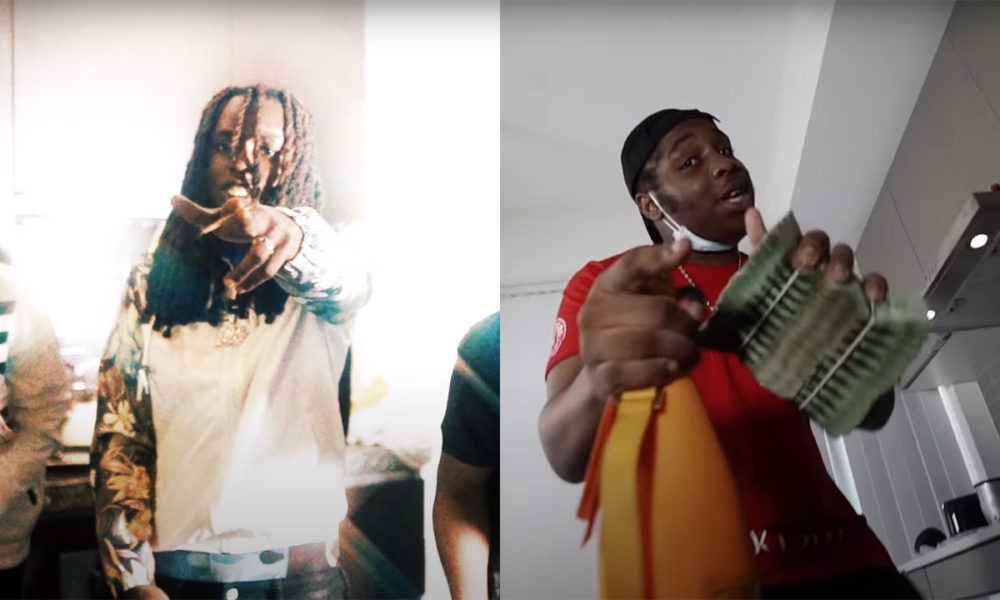Yesterday’s Independence Day parade tragedy in Highland Park was one the worst mass shootings in Illinois history. It was compounded by the fact that the main suspect had managed to escape the scene and evade police for several hours.
But when Robert “Bobby” Crimo III was finally arrested—peacefully—it was a stark reminder that in the United States of America, your experience with law enforcement could come down to the colour of your skin. Statistics show this to be true. A report published by the Washington Post on June 29, 2022 shows that 1,042 people have been shot and killed by police in the past year (as of that date). There have been more than 5,000 police shootings recorded by The Post since they started logging the info back in 2015. It also shows that Black Americans and Hispanic Americans are killed at a much higher rate than White Americans.
“Although half of the people shot and killed by police are White, Black Americans are shot at a disproportionate rate. They account for less than 13 percent of the U.S. population, but are killed by police at more than twice the rate of White Americans. Hispanic Americans are also killed by police at a disproportionate rate.”
The Highland Park shooting came a week after Akron, Ohio cops shot and killed a Black motorist named Jayland Walker. The 25-year-old had allegedly committed unspecified traffic violations on June 27 which had led to police attempting to pull him over. He fled the scene and was then gunned down during a foot chase with police in what can only be described as cruel and using unnecessary force. An execution.
As CNN reported: “‘Walker was unarmed at the time he was killed,’ Akron Police Chief Stephen Mylett told reporters. A gun was found in Walker’s vehicle after the shooting, police said, and officers said Walker fired a gun from his vehicle during the car chase.”
A medical examiner’s report found Walker suffered at least 60 gunshot wounds, and other reports indicate that at least 90 shots were fired by the officers pursuing him. That’s roughly 20 more than the 70+ rounds Crimo allegedly fired from a business rooftop, according to NBC News.
Walker might have had a gun in his car—and might have even let off a shot in his attempt to flee—but he was unarmed when he was killed and it’s a far cry from how police handled their pursuit of a White mass shooter they considered “armed and dangerous.”
As Bruce C.T. Wright of NewsOne noted: “The treatment of Robert ‘Bobby’ Crimo III, who led police on what the New York Times called ‘a brief chase’ before his arrest, pales in comparison — pun intended — to what happened to Jayland Walker, a Black driver in Ohio whose body was riddled with at least 60 bullet wounds after cops let off a barrage of shots during and after an apparent brief chase just one week earlier.”
The bodycam footage of the Walker shooting is hard to watch, but it makes it pretty clear that the amount of lethal force used to stop him was inhumane and unnecessary. There was a small army of police officers chasing an unarmed-Walker. Crimo led police on a chase while heavily armed, but was apprehended without a single shot being fired in his direction.
It’s not the first time we’ve seen police apprehend a highly dangerous suspect without needing to apply force. Back in May, 18-year-old Payton S. Gendron was charged with killing 10 people after ambushing a Buffalo grocery store in a racist hate filled rage. Despite still being armed and a threat to those around him, Gendron was able to surrender to police and was taken into custody without incident. It’s a different situation, but another example of how police response varies.
As Bishop Talbert Swan of the Nova Scotia Ecclesiastical Jurisdiction in Canada tweeted: “An armed, Trump supporter, white supremacist, murderer, who executed 6 people and injured 24 on the #4thOfJuly, was gently handled and arrested by police, but they hunted and slaughtered a Black man with 90 bullets for an alleged traffic violation.”
It’s hard not to wonder why so much aggression and force was needed to apprehend a young man with no criminal record, who posed no threat at the time of his death.
Some will ask why Walker chose to flee from the traffic stop, but the only person who knew the answer to that question was him. Still, him fleeing does not give the police the right to be his judge, jury and executioner. He was unarmed when he was gunned down, as per the police chief’s own declaration.
Eight police officers were “directly involved” in the shooting of Walker and all have been placed on paid administrative leave pending an investigation, according to their department’s protocol. According to information released by Akron officials, seven of the eight officers were White and one was Black.
“The decision to deploy lethal force as well as the number of shots fired is consistent with use of force protocols and officers’ training,” the Fraternal Order of Police Akron Lodge 7 said in a statement seen time and time again after these types of incidents.
Is there really a protocol that supports the need for multiple officers to unload into an unarmed civilian? Unarmed. There doesn’t seem to be anything about that in the Use of Force Continuum the law was built around. The short answer is that officers in the United States are currently trained to fire until they’ve terminated a threat, and that’s likely the point they’re going to stand on. And it could come down to whether they were justified in believing Walker was a threat. Either way, a civilized society shouldn’t accept 60 gunshot wounds as anything but inhumane treatment.
In 1990, the United Nations adopted the “Basic Principles on the Use of Force and Firearms by Law Enforcement Officials” and under ‘General provision’ 5 (b) law enforcement officials are expected to “minimize damage and injury, and respect and preserve human life.” It’s not legally binding for the Member States but provides guidelines that the United Nations encourages those countries to adopt. To say the United States needs to embrace these guiding principles at a higher degree is an understatement, and the time is now for officials to review the use of force protocols used by police across their country.
Perhaps better training would be a good place to start. Alarmingly, in the United States, the average police academy runs 17 weeks, whereas in countries like Finland and Norway, police training runs three years, and in Germany between two and three years. It’s not that much better in Canada. For example, the Cadet Training Program to become an RCMP officer is an extensive 26-week basic training course. It takes longer to become a professional plumber.
Overall, Crimo and Walker are two different cases, and the way they’re being reported on by some media outlets seems to be different as well.
As Michael Arceneaux noted in a post on The Independent: “Bobby DiCello, a lawyer for the Walker family, took issue with how Jayland had been portrayed by some media in a news conference, telling the New York Times, ‘They want to turn him into a masked monster with a gun.’ Meanwhile, Crimo, a suspected mass murderer, is receiving the kind of favorable media narratives only afforded to white men. In an interview with CNN, Highland Park mayor Nancy Rotering said she knew the suspect years ago when she was his Cub Scout pack leader. ‘Many years ago, he was just a little boy, a quiet little boy that I knew,’ Rotering said. ‘It breaks my heart. I see this picture and through the tattoos, I see the little boy. I don’t know what got him to this point.’”
Walker’s death is now being investigated by the Akron Police Department’s Major Crimes Unit and the Ohio Bureau of Criminal Investigation. Meanwhile, Crimo, who made music for several years under the alias Awake The Rapper, has been charged with seven counts of first-degree murder. Authorities now believe he planned the attack for several weeks.
Disclaimer: The views and opinions expressed in this article are those of the authors and do not necessarily reflect the official policy or position of HipHopCanada Digital. Any content provided by our bloggers or authors are of their opinion and are not intended to malign any religion, ethnic group, club, organization, company, individual or anyone or anything.



